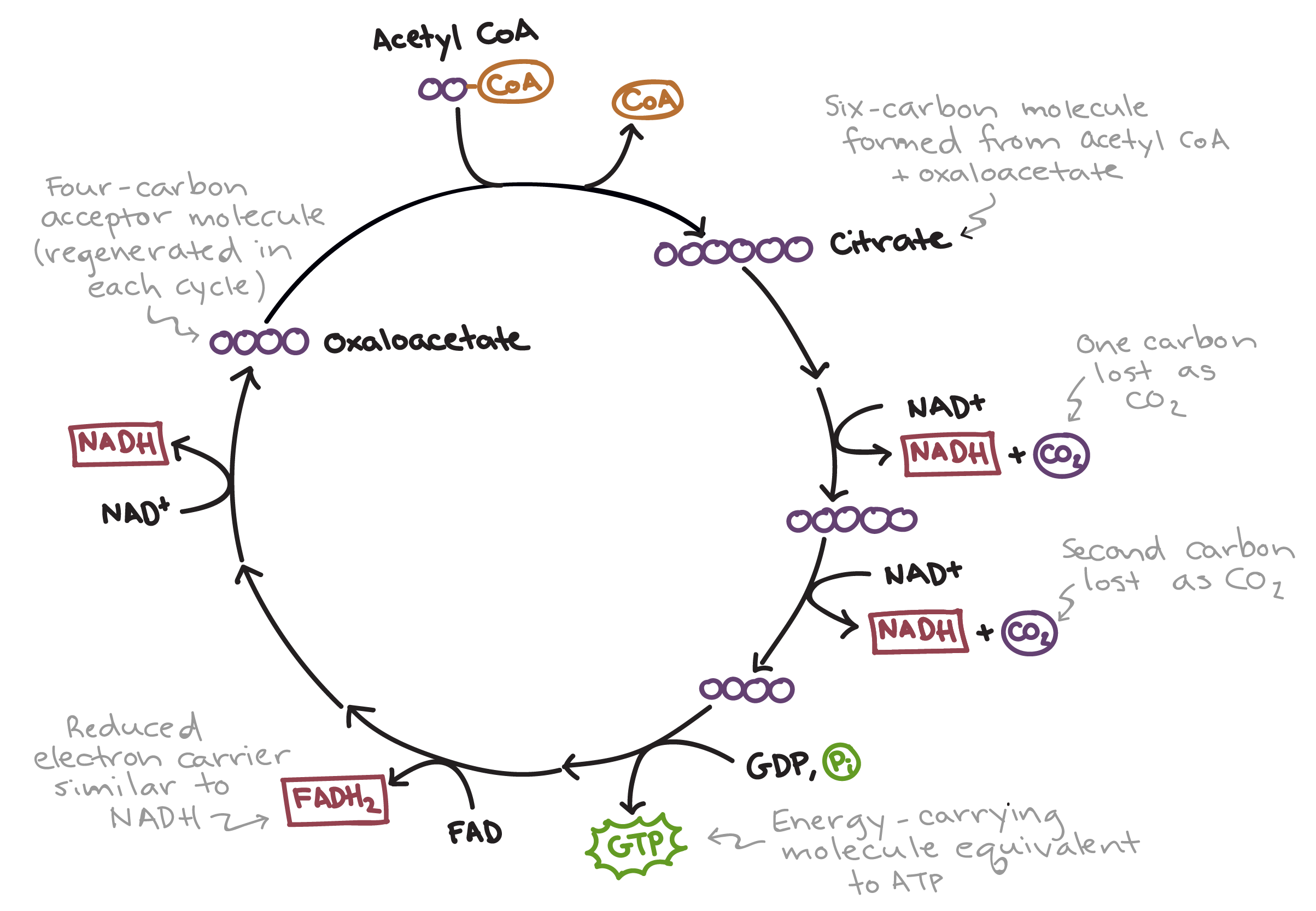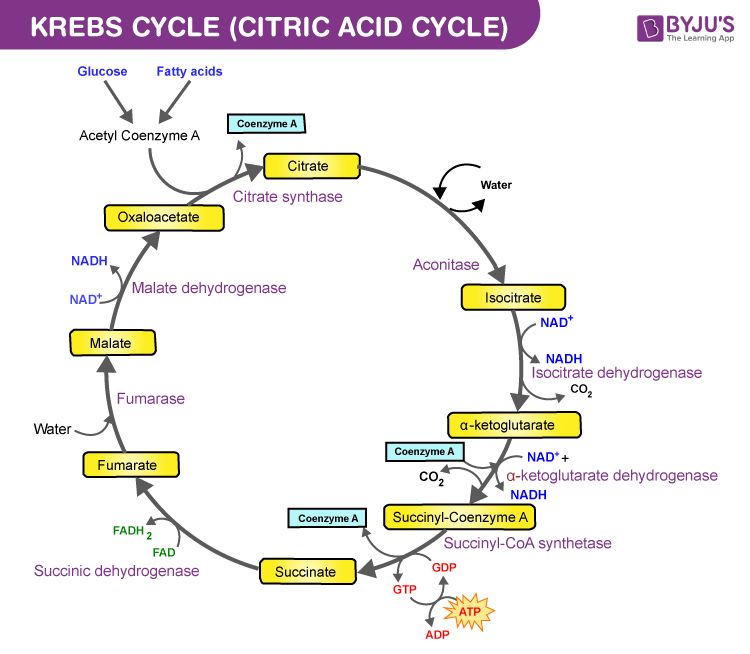Efficient in an oxyg. After glycolysis breaks glucose into smaller 3-carbon molecules the.

Tricarboxylic Acid Cycle Biochemistry Britannica
The citric acid cycle also known as the Krebs cycle or tricarboxylic acid TCA cycle is a series of chemical reactions in the cell that breaks down food molecules into carbon.
. It is also known as TriCarboxylic Acid TCA cycle. Up to 24 cash back The Krebs cycle is the first main part of cellular respiration. What are the similarities between the.
It begins with the. By Ra_Edith566 18 Apr 2022 Post a Comment Until the Krebs cycle aerobic respiration can be described without mentioning. Write a description of the process of cellular.
Overview of the steps of cellular respiration. This transfers high energy molecules and makes it so that citric acid is the first molecule formed. The Krebs Cycle is another name for the Citric Acid cycle TCA cycle and it is how the body produces energy ATP under aerobic conditions - meaning it requires oxygen.
The citric acid cycle also known as the Krebs cycle is the second pathway in cellular respiration and it also takes place in the mitochondria. Describe the mechanism of reaction 2 of the Krebs Cycle. Explain the functions of electrons hydrogen ions and oxygen in the electron transport chain.
The cellular respiration is the process by which glucose is broken down and produce metabolic energy. The Krebs cycle breaks down energy from molecules makes small amounts of ATP and releases carbon dioxide. The Krebs Cycle also called the citric acid cycle is the second major step in oxidative phosphorylation.
The Krebs cycle is simply another name for the Citric Acid Cycle so named for the researcher who identified the complete cycle in 1937. ATP and NADH are made. In your own words describe what happens in oxidation-reduction reactions.
Discover how the Krebs cycle works. In prokaryotic cells the citric acid cycle occurs in the. In your own words explain why aerobic catabolism of glucose produces so much more ATP than anaerobic catabolism.
The Krebs cycle rearranges and splits and bonds carbon dioxide and ATP causing energy to be formed and sugar to be produced. Since the end results of glycolysis are 2 pyruvates the Kreb cycle goes through 2 cycles in order to make 2. Steps of cellular respiration.
Describe in your own words the function of the Krebs cycle. For instance Nelson at one point referred to a scientific. What is the relationship between glycolysis and fermentation.
Describe in your own words the function of the Krebs cycle. Whether youre a student teacher homeschooler principal adult returning to the classroom. Describe in your own words the function of the Krebs cycle.
Electron Transport Chain ETC Address the following criteria in your main response to this weeks discussion. Directly because the Krebs cycle makes 1 ATP molecule for every 1 pyruvate. It is also known as the citric acid or tricarboxylic.
In aerobes with sufficient oxygen pyruvate is transported to the mitochondrion to undergo further transformations in the Krebs cycle. Describe the Krebs Cycle in Your Own Words Until the Krebs cycle aerobic respiration can be described without mentioning oxygen the chemical. The reactions which help in converting pyruvic acid to carbon dioxide and water in mitochondria are called the Krebs cycle.
Cellular respiration makes many more ATP molecules than does glycolysis. Krebs Citric Acid Cycle Steps by Steps Explanation. Six-carbon glucose is converted into two pyruvates three carbons each.
Describe the Krebs Cycle in Your Own Words. The rate of the cycle is. Which steps of ATP formation require oxygen.
The Krebs Cycle.

The Kreb Cycle Made Easy Youtube

The Citric Acid Cycle Cellular Respiration Article Khan Academy

Linking Step Of Glycolysis And Krebs Cycle Definition Examples Diagrams

Krebs Cycle Made Easy Krebs Cycle Simple Animation Carbohydrate Metabolism Lesson Youtube

Krebs Cycle Or Citric Acid Cycle Steps Products Significance



0 Comments